Perhaps the most fundamental condition of creativity is that the source or locus of evaluative judgement is internal.
Carl Rogers (1998)
When I was thirteen my art teacher told me I wasn’t good enough to do art at ‘O’ Level and I believed him. Perhaps what he actually meant was, “you enjoy making art too much. You don’t take it seriously.” I used to sing and make noises and talk during my mark making. I once drew a still life that had the words, “ahhh, shit!” in it (I drew what I saw). Perhaps he disliked my enthusiasm because he’d lost his own. I didn’t take art seriously. It was fun. Until he told me I wasn’t good enough. I stopped making art and began journalling instead.
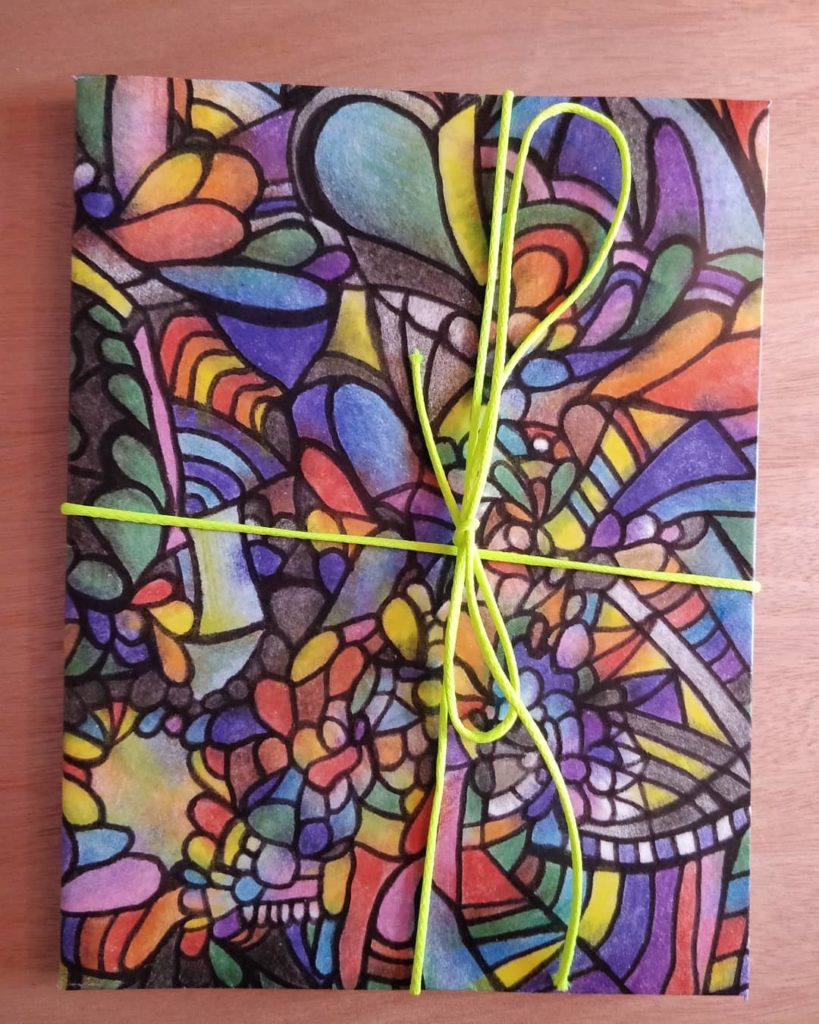
The Artist’s Way Can Unblock Creativity
In 2007 I tagged along to an Artist’s Way course, where I realised that Mr Yates’ criticism of me was now a block and could be unblocked. I bought some cheap canvases and paint and splashed and poured and mixed the paint on the canvas. I delighted in the colours and how some made others pop. I loved these paintings with childlike glee.
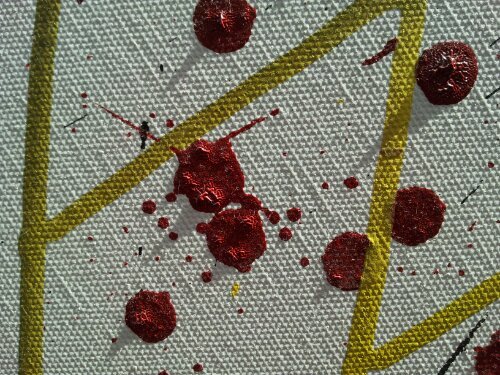
Later that year trauma memories began to resurface, shocking me into isolation. As I slowly moved into the depths of despair, art helped me express some of what I saw. I climbed out of that hole, but many more appeared that I fell in. I ascended some by myself and sometimes a kind soul arrived and let down a rope or ladder to help me out. Sometimes I could paint what happened and sometimes Mr Yates’ voice would creep in saying, “you’re not good enough.”
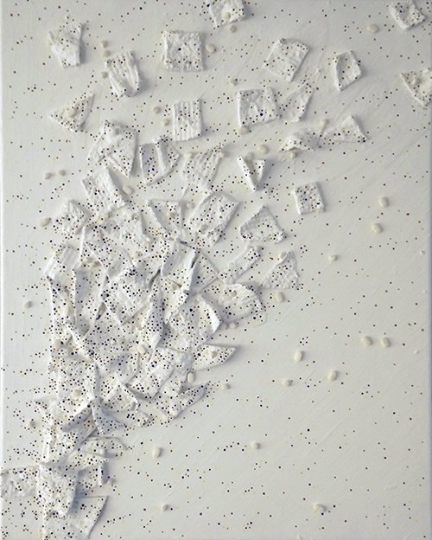
I finished this painting four years after trauma memories began resurfacing. Click the photo for the story about how the painting emerged and why there are anti-depressants stuck to it.
Sometimes We Move Back Before We Move Forward
To prove Mr Yates wrong I studied Moving Image at university and graduated with a 2:1. I also left with no desire to make art. Eight months later I felt a yearning for something art-related and I set myself a daily goal of drawing without purpose for twenty minutes. Within days my love of drawing came back and I took gleeful delight in the colours and blending them together so you couldn’t see where one ended and the other began. It took a few more years before I could paint again. I worked on one canvas for eighteen months. Dots. I love them. It has loads and loads of them. Painting dots is soothing to me.
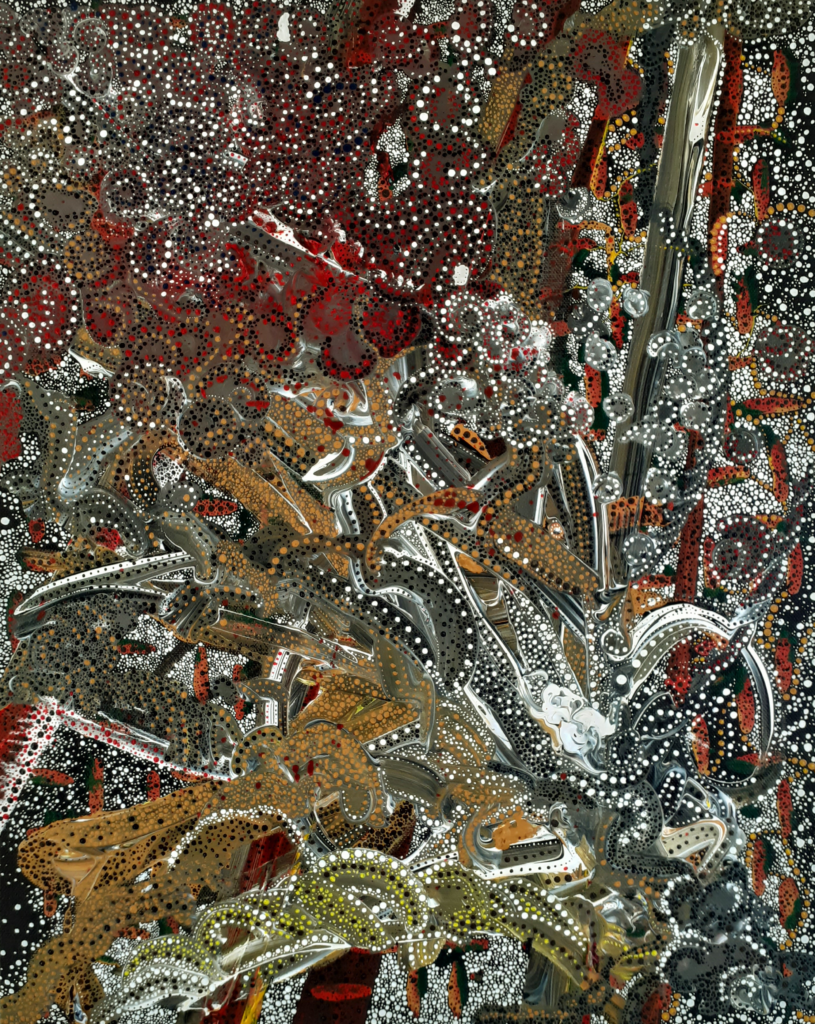
This painting took eighteen months to complete. I was thinking about the nature of time and light, particularly in Autumn and Winter. Painting dots can be meditative and soothing.
Sometimes We Get Validation By Seeing What Others Have Done
During Lockdown I started an online course by Museum of Modern Art on abstract expressionism. It was validating. Even though I follow my urges to create painting techniques, sometimes it felt like my techniques weren’t proper or “good enough”. Being introduced to the techniques of Barnett Newman – masking tape lines – and Willem de Kooning’s random colours, and Pollock’s drips and splashes validated everything I’d been doing for years.
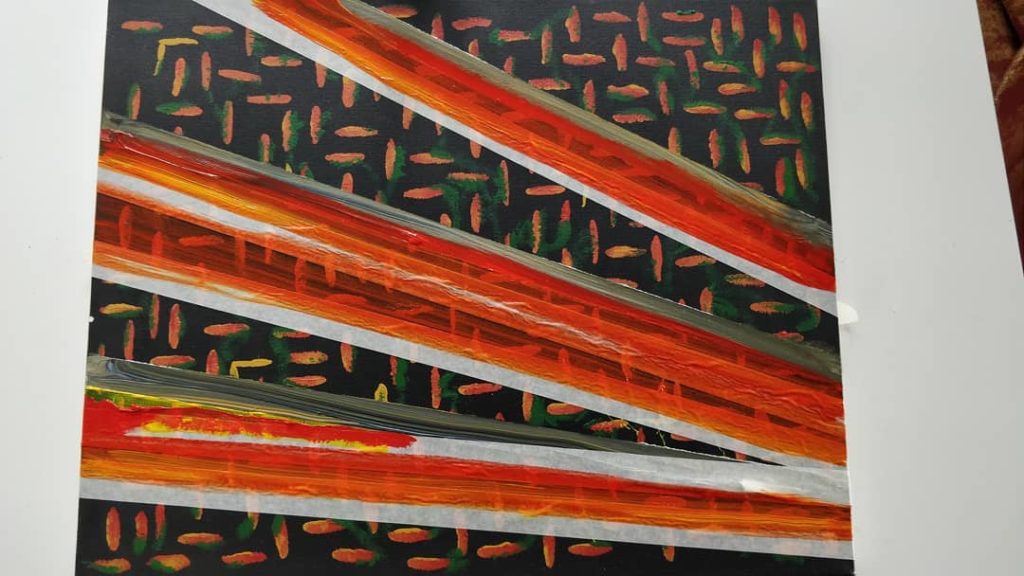
Those painters had to unlearn everything they’d been taught at art school to produce their groundbreaking paintings. Whereas I had been feeling like I should be learning proper composition, and figurative reproduction, and be evaluated by an ‘expert’. Now I know that none of that is true. External evaluation only ever hurts, even when it praises.
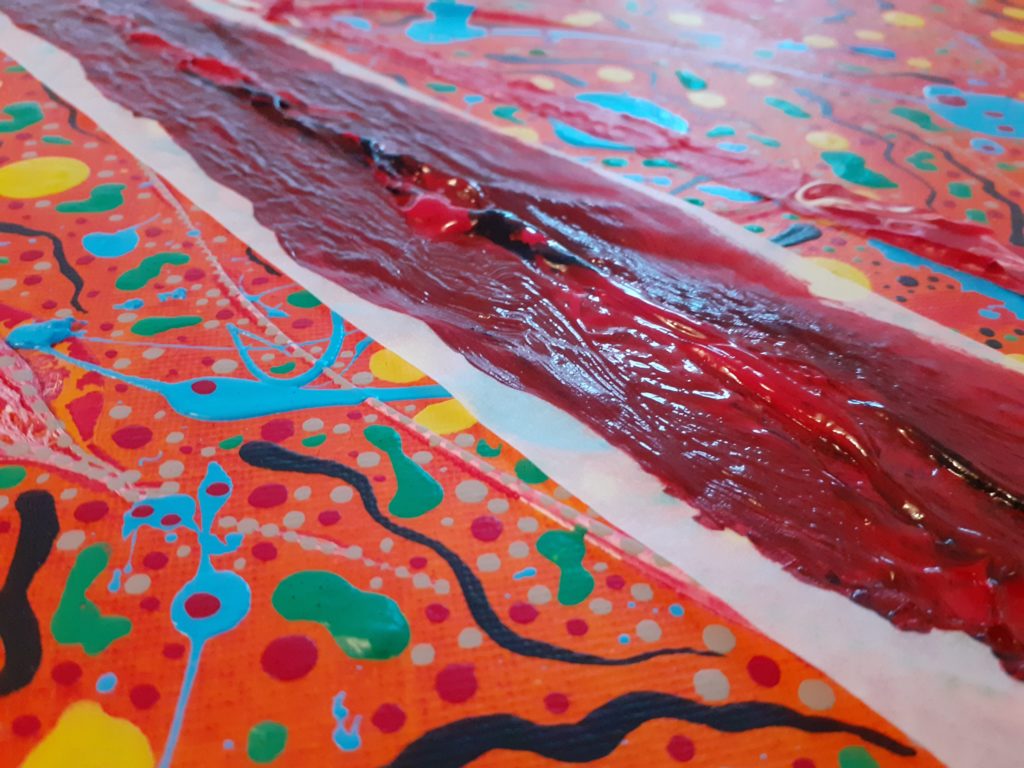
Listen to Your Inner Creative Urges and Honour Them
What’s important is giving space to those inner urges so I can hear and see them. That’s the voice of my intuition. Sometimes it gives short instructions like, ‘mix black paint with water, and I go and do that. I somehow know when it is the right consistency – if feels right – and then I show up at the canvas. The next step is revealed: ‘paint black squiggly lines,’ so I do that, feeling at once repulsed and fascinated, which helps me process feelings from a trauma memory.
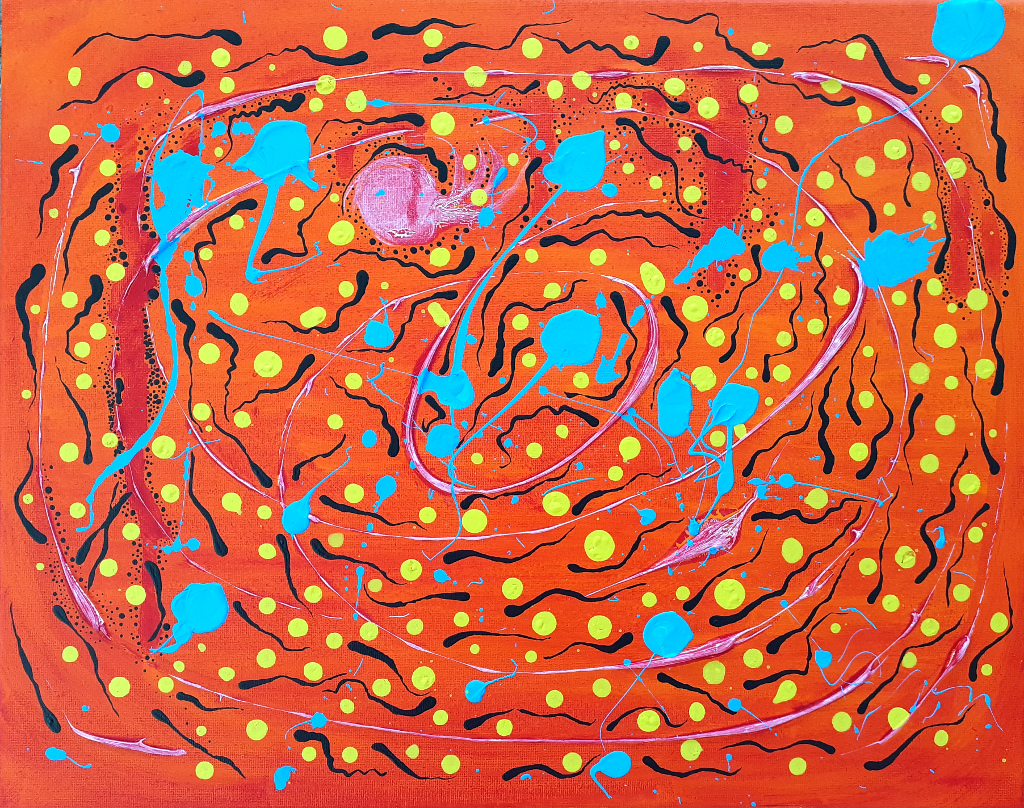
Other times the urge is to mix beige and paint dots on and around all the pink tinged things on the canvas and I do that, feeling lost in the meditative state of seeing and painting. Or there’s the urge to place two pieces of masking tape on the painting, dump red and white paint straight from the tube and mix it there on the canvas leaving lumps. The disruption is gleeful – the painting trajectory has changed. What will become of it now?
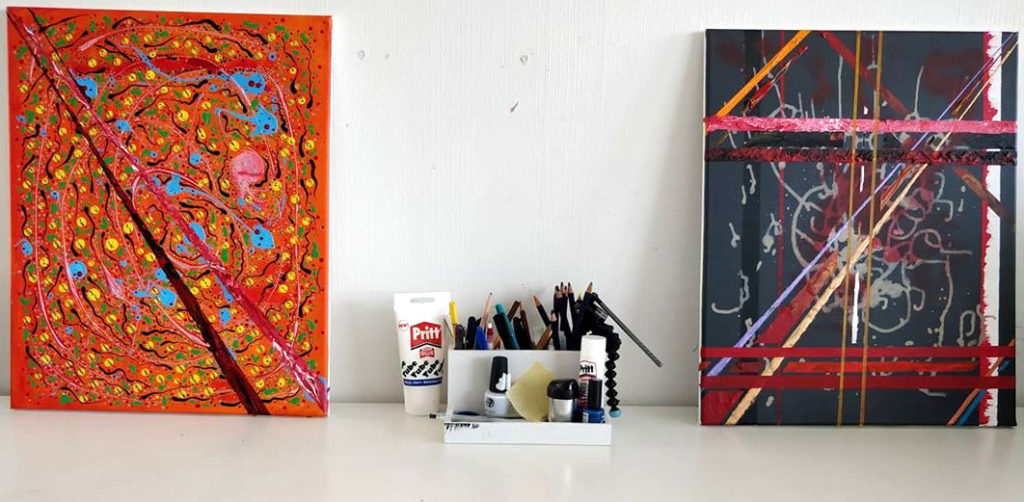
I love my process now and I wrote in my journal recently, “fuck you, Mr Yates! I am a painter!” My locus of evaluation is internal now… mostly.
Reference
ROGERS, C., 1998. On Becoming a Person A Therapist’s View of Psychotherapy. Constable: London.
